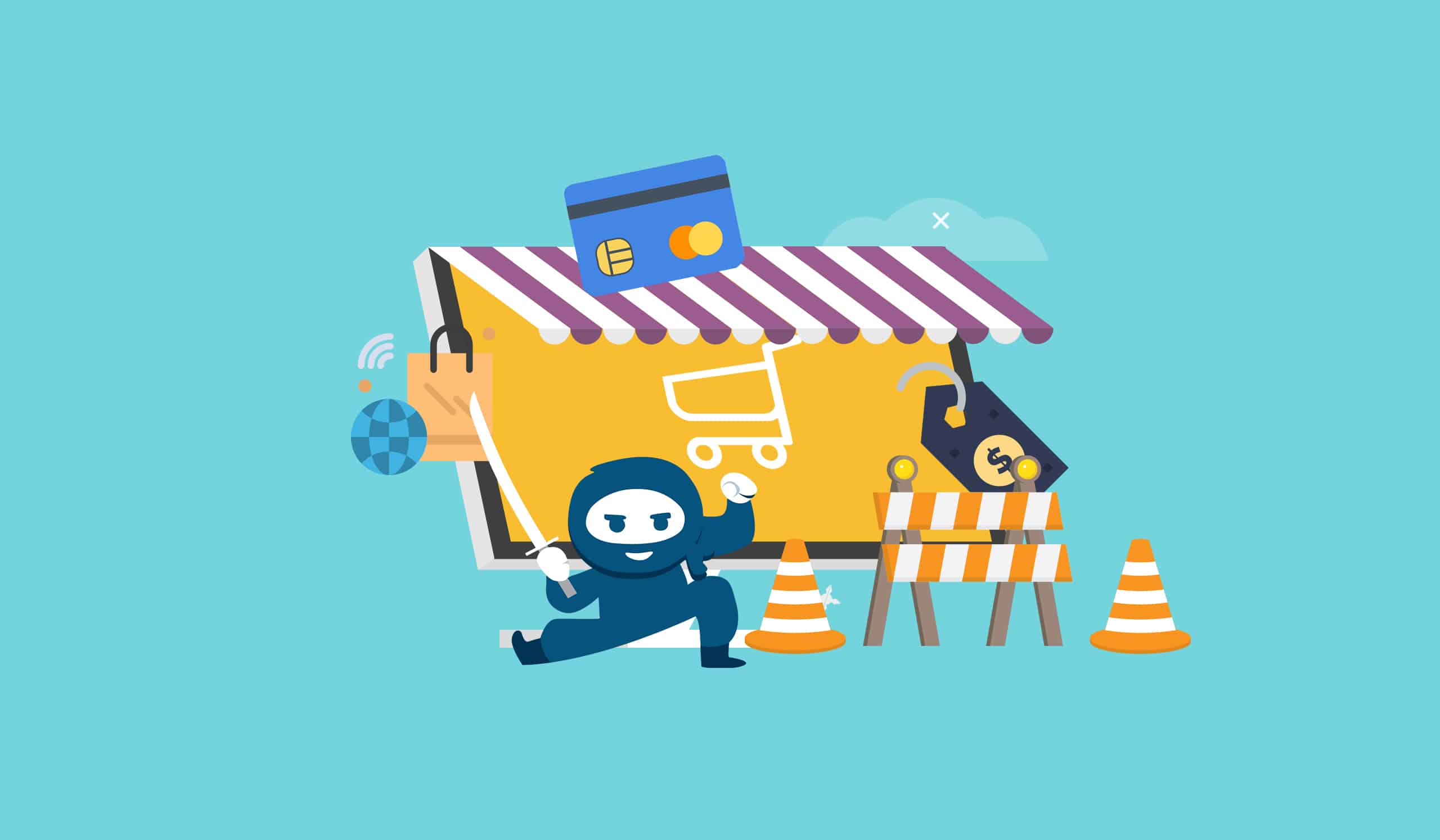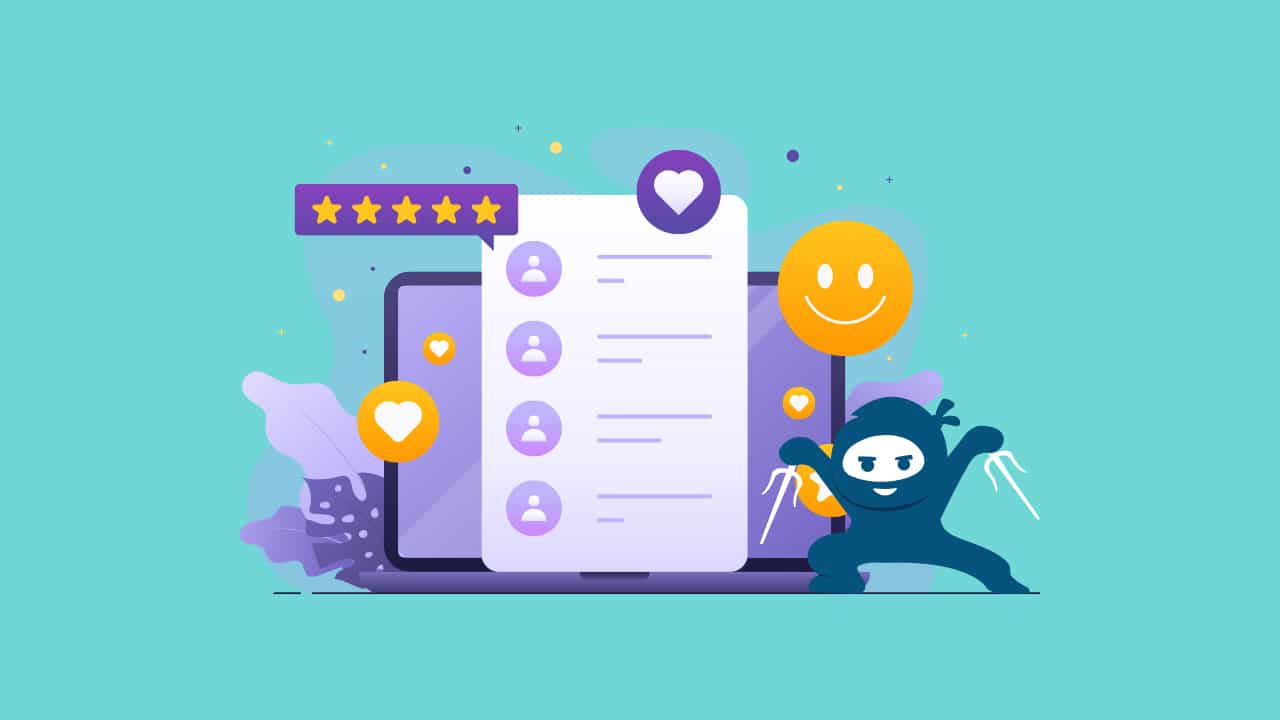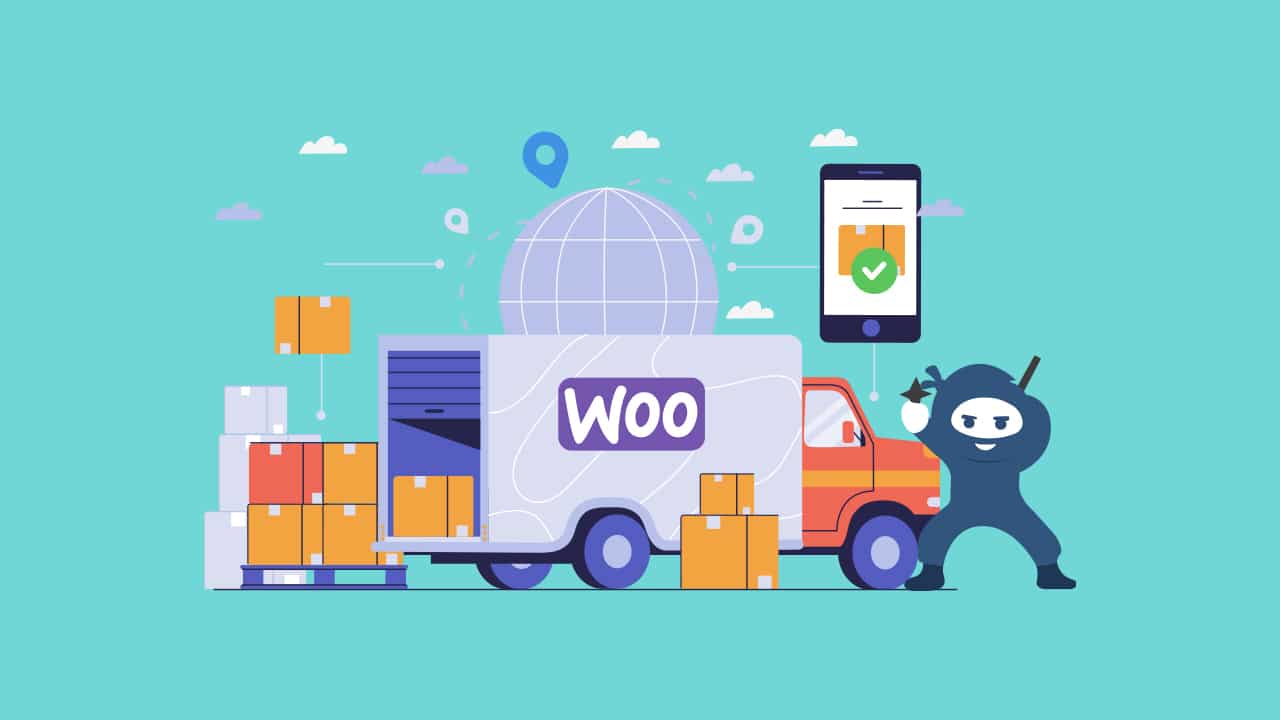As an online store owner, it is important to prioritize the maintenance of your WooCommerce store to ensure that it runs smoothly, securely, and successfully.
WooCommerce is a popular open-source e-commerce platform built on top of WordPress that allows users to sell products and services online. With the increasing reliance on e-commerce in today’s digital age, it is important to stay vigilant and regularly perform maintenance tasks to keep your store running smoothly and securely.
This blog will discuss the top things you should do to maintain your WooCommerce store and keep it secure. From regularly backing up your store to optimizing website speed and using a content delivery network, we will cover the essential maintenance tasks that will help you keep your store running flawlessly.
Why Is WooCommerce Maintenance Important?
Keep Your Store Running Smoothly
By regularly updating your store and plugins, you can ensure that everything runs smoothly and efficiently. This includes keeping the store up to date with the latest versions of WooCommerce and WordPress and ensuring that all plugins and themes are compatible.
Enhance the Store’s Performance
Regular maintenance can improve the performance of your website by optimizing your database and removing any unnecessary files or data. This can help your website load faster and provide a better user experience for your customers.
Improve The Customer Experience
Customers expect a smooth and seamless shopping experience, and if your store needs to be well-maintained, it can lead to satisfaction and lost sales. Keeping your store up to date and running smoothly can provide a better customer experience, leading to increased customer satisfaction and loyalty.
Protect Your Store from Security Vulnerabilities
Cybersecurity is a top concern for online businesses, and protecting your store and your customer’s personal and financial information is essential. Regularly updating your store and plugins can reduce the risk of security breaches and keep your customers’ information safe.
Improve Your Search Engine Ranking
Search engines like Google consider the overall user experience when ranking websites, and a well-maintained store is more likely to rank higher in search results. This can lead to increased traffic and sales for your business.
Maintaining a WooCommerce store requires a consistent effort to keep it running smoothly and efficiently, but it is essential for the success of your online business.
Top WooCommerce Maintenance Tasks to Keep Your Online Store Secure
By following these best practices, you can protect your store from potential security threats and ensure it is successful in the long run.
Keep Your Store and Plugins Up to Date
One of the most important maintenance tasks for any WooCommerce store is to keep your store and plugins up to date with the latest versions. Updating your store and plugins can help to fix bugs and security vulnerabilities, as well as improve the overall performance of your store.
There are several reasons why it is important to keep your WooCommerce store and plugins up to date:
Fix bugs and security vulnerabilities
As with any software, WooCommerce and its plugins can have bugs or security vulnerabilities that can be fixed with updates. By keeping your store and plugins up to date, you can ensure that any issues are addressed and that your store runs smoothly and securely.
Improve performance
Updating your store and plugins can also help improve your store’s overall performance. This includes faster load times and better compatibility with other plugins and themes.
Take advantage of new features
In addition to fixing bugs and improving performance, updates to WooCommerce and its plugins can also introduce new features and functionality. By keeping your store and plugins up to date, you can take advantage of these new features and improve the user experience for your customers.
To keep your WooCommerce store and plugins up to date, follow these steps:
- Update WordPress:
To update WordPress, go to the “Updates” section of the WordPress admin dashboard and click the “Update Now” button.
- Update WooCommerce:
To update WooCommerce, go to the “Plugins” section of the WordPress admin dashboard, find the WooCommerce plugin, and click the “Update” button.
- Update plugins:
To update individual plugins, go to the “Plugins” section of the WordPress admin dashboard, find the plugin you want to update, and click the “Update” button. You can also bulk update your plugins by selecting them and clicking the “Update” button.
- Test updates on a staging site:
Before updating your store and plugins on your live site, it is a good idea to test the updates on a staging or development site. This can help to ensure that the updates are compatible with your store and will not cause any issues.
Moreover, several plugins like WP Auto Updater and Easy Updates Manager are available that can help to automate the process of keeping your WooCommerce store and plugins up to date!
Using Strong Passwords and Two-Factor Authentication (2FA)
Ensuring the security of your login credentials is critical for protecting your WooCommerce store and your customer’s personal and financial information. One way to do this is by using strong passwords and enabling two-factor authentication.
One of the main reasons to do this is to prevent unauthorized access to your WooCommerce store. If someone else gains access to your store’s admin panel, they can make changes to your store, access sensitive information, and potentially cause damage.
Besides, it also protects against brute force attacks. A brute force attack is when an attacker tries to guess your login credentials by repeatedly trying different combinations of username and password.
Here are a few tips for creating strong passwords:
- Use a password manager is a tool that generates and stores strong, unique passwords for you. This can help ensure you use strong passwords for all your accounts, including your WooCommerce store.
- A strong password should be at least 12 characters long to make it harder for an attacker to guess. To increase its complexity, it should also contain a combination of uppercase and lowercase letters, numbers, and special characters.
- Avoid using personal information in your passwords, such as your name, address, or phone number.
Moreover, there are several plugins available for enabling two-factor authentication (2FA) on your WooCommerce store:
Limit Login Attempts
Limiting login attempts is a security measure that can help protect your WooCommerce store from brute-force attacks. A brute force attack is a type of cyber-attack where a hacker uses automated software to try and guess a user’s login credentials by repeatedly trying different combinations of username and password.
Limiting the number of login attempts allowed for a particular user or IP address can reduce the effectiveness of a brute-force attack and make it harder for a hacker to gain access to your website.
There are several WordPress plugins available that can help you limit login attempts for your website. One popular option is Limit Login Attempts Reloaded, which allows you to set the maximum number of login attempts for a particular user or IP address.
In addition to limiting login attempts, using strong passwords for your website and enabling two-factor authentication, if available, is important. These measures can help further protect your WooCommerce store from brute force attacks and other security threats.
Using a Security Plugin on Your WooCommerce Store
Installing a security plugin can help protect your WooCommerce store from various security threats, such as malware, brute force attacks, and SQL injections. Not only that, but it also enables you to detect and block malware infections on your WooCommerce store.
Some security plugins also can monitor your store for potential vulnerabilities and alert you if any are detected. They protect your store against brute force attacks by limiting the number of login attempts and blocking IP addresses attempting to guess your login credentials.
There are several popular security plugins available for WooCommerce stores:
In addition, here are a few important tips for using a security plugin to protect your store:
- Configure the plugin’s settings:
It is important to take the time to configure the settings of your security plugin to ensure that it is properly protecting your store. This may include setting up email notifications, blocking IP addresses, and enabling specific security features.
- Scan your store regularly:
Most security plugins can scan your store for malware and other security threats. It is a good idea to check your store to ensure it is secure regularly.
- Keep the plugin up to date:
It is important to keep your security plugin up to date to ensure that it is taking advantage of the latest security features and protections.
- Use multiple security measures:
While a security plugin is important for protecting your store, it does not replace other security measures such as strong passwords, SSL, and a web application firewall. It is a good idea to use a combination of security measures to ensure maximum protection for your store.
Enable SSL
Securing your WooCommerce store with an SSL certificate is important for protecting your customers’ personal and financial information.
SSL is a security protocol that encrypts data transmitted between a web server and a web browser. When SSL is enabled on a website, the data shared between the server and the browser is encrypted, making it more difficult for someone to intercept and read the data.
For online stores, SSL is particularly important because it helps to protect the personal and financial information of your customers. When customers enter their personal and financial information on your store, SSL helps to ensure that this information is encrypted and secure during the transmission process.
To purchase and install an SSL certificate on your WooCommerce store, follow these steps:
- Several companies offer SSL certificates for purchase, such as GoDaddy and Bluehost. Choose a company that provides a reputable and secure SSL certificate that meets your needs.
- After purchasing an SSL certificate, you must install it on your server. The process for installing an SSL certificate can vary depending on your hosting provider and the type of SSL certificate you purchased. Consult your hosting provider or the SSL certificate provider for instructions on installing the certificate.
- Once the SSL certificate is installed on your server, you must configure your WooCommerce store to use SSL. To do this, go to the “General” settings in the WordPress admin dashboard and change the “WordPress Address (URL)” and “Site Address (URL)” to use “https” instead of “http.”
- After configuring your store to use SSL, it is a good idea to test it to ensure it uses SSL correctly. You can do this by visiting your store in a web browser and checking the URL to ensure that it begins with “https.”
To enable SSL in the WordPress settings, follow these steps:
- Go to the “General” settings in the WordPress admin dashboard.
- In the “WordPress Address (URL)” field, change the “http” to “https.”
- In the “Site Address (URL)” field, change the “http” to “https.”
- Click the “Save Changes” button.
Regularly Scan for Malware
One of the most important tasks for keeping your WooCommerce store secure is regularly scanning for malware. Malware, or malicious software, is any program designed to harm or exploit computer systems. Many types of malware include viruses, worms, Trojans, and ransomware. Malware can compromise the security of your store by:
- Damaging your store or deleting important data, making it difficult or impossible to use your store.
- Stealing sensitive information such as customer names, addresses, and credit card numbers can lead to identity theft and financial loss.
- Redirecting your store’s visitors to another site can lead to a loss of traffic and revenue.
Therefore, regularly scanning for malware is essential for keeping your WooCommerce store secure. However, there are several tools and services available for monitoring your store for malware:
Security plugins:
Many security plugins, such as Wordfence and Sucuri Security, include malware scanning as a feature. These plugins can scan your store for malware and alert you if any is detected.
Online malware scanners:
There are also several online malware scanners available that can scan your store for malware. Some popular options include VirusTotal and Quttera.
Managed security services:
Managed security services, such as Sucuri, offer malware scanning and removal as part of their service. These services can scan your store for malware and help to remove any infections that are found.
Tips For Preventing Malware Infections
- One of the best ways to prevent malware infections is to keep your store and plugins updated. Updating your store and plugins can help to fix security vulnerabilities that could be exploited by malware.
- Use a security plugin to protect your store from malware by scanning for and blocking malware infections.
- Using strong passwords for your store’s login credentials can help to prevent brute force attacks, which can be used to install malware on your store.
- Be cautious about what you download or click on, as malware can often be spread through suspicious files or links.
- Use A Web Application Firewall
A web application firewall (WAF) is a security tool that can help protect your WooCommerce store from various security threats, such as SQL injections, cross-site scripting (XSS), and brute force attacks.
A web application firewall can protect your store by:
- Blocking malicious traffic from reaching your store can help to prevent security threats such as SQL injections and XSS attacks.
- Identifying and blocking bot traffic can help prevent brute force attacks and other automated attacks.
- Enhancing the overall security of your store by providing additional layers of protection.
Moreover, several popular web application firewalls, like Sucuri, Cloudflare, Akamai, etc., are available to ensure the security of your WooCommerce stores.
Tips For Configuring and Using a Web Application Firewall
- It is important to take the time to configure the settings of your web application firewall to ensure that it is properly protecting your store. This may include setting up rules to block specific types of traffic and enabling particular security features.
- After configuring your web application firewall, it is a good idea to test your store to ensure it functions correctly. This may include visiting your store in a web browser and checking for any issues with functionality or performance.
- Most web application firewalls have logs that can be used to monitor the traffic to your store. Regularly reviewing these logs is a good way to identify potential security threats or issues.
- It is important to keep your web application firewall up to date to ensure that it is taking advantage of the latest security features and protections.
Keep Your Store’s Design and Content Up to Date
Maintaining an up-to-date design and content on your WooCommerce store is important for several reasons.
Here are a few key reasons why it is important to keep your store’s design and content up to date:
Improved user experience:
An outdated design or content on your store can create a poor user experience for visitors. By regularly updating the design and content of your store, you can ensure that your visitors have a pleasant and seamless shopping experience.
Protect against vulnerabilities:
Outdated software and themes can contain vulnerabilities that hackers can exploit. By keeping your store’s design and content up to date, you can ensure that you are using the most secure versions of software and themes, reducing the risk of a security breach.
Increased sales:
An outdated store can give the impression that the business is no longer active or relevant. Keeping your store’s design and content fresh and current can increase trust and credibility with potential customers, leading to increased sales.
Better search engine rankings:
Search engines like Google favor websites with fresh and relevant content. Regularly updating your store’s content can improve your search engine rankings and drive more traffic.
In addition, here are a few tips for updating your store’s design and content:
- Ensure to regularly review and update your product descriptions to ensure that they are accurate and up to date.
- Use high-quality images and videos to showcase your products and improve your store’s look and feel.
- Add new content to your blog to keep your store relevant and engaging for visitors.
- Consider refreshing your store’s design to make it more modern and visually appealing.
- Utilize social media platforms to drive traffic to your store and keep your products and store in front of potential customers.
Monitor Your Store’s Performance
Monitoring your store’s performance is important for keeping your WooCommerce store secure and ensuring that it is running smoothly. Here are a few key metrics to watch for the version of your store:
Website traffic:
Monitor the number of visitors to your store and where they are coming from. This can help you understand your store’s popularity and identify potential issues with your marketing efforts.
Conversion rate:
Track the percentage of visitors who purchase your store. This can help you understand how well your store converts visitors into customers.
Average order value:
Monitor the average amount of money that customers spend on your store per order. This can help you understand the value of your products and identify opportunities for increasing sales.
Load time:
Track the amount of time it takes for your store to load. A slow load time can negatively impact your store’s performance and drive away potential customers.
Fortunately, there are several tools that you can use to monitor your store’s performance, including Google Analytics and Hotjar.
In addition, here are a few steps you can take to improve the performance of your store:
- Slow load times can negatively impact your store’s performance. Use tools such as GTmetrix or Google PageSpeed Insights to identify areas for improvement and optimize your store’s speed.
- A poorly designed store can confuse and frustrate visitors, leading to a low conversion rate. Use tools such as Hotjar to identify areas for improvement and make your store more user-friendly.
- Use targeted marketing campaigns to drive traffic to your store and increase conversions. This can include email marketing, social media advertising, and search engine optimization.
- High-quality products and excellent customer service are key to retaining customers and increasing sales. Make sure to regularly review and improve your products and customer service to meet your customers’ needs.
Backup Your Store Regularly
Backing up your WooCommerce store is an important part of maintaining the security and integrity of your online business. A regular backup routine can help protect you from data loss due to hardware failures, software glitches, or malicious attacks.
If anything goes wrong, it is important to regularly back up your store to ensure that you have a copy of all your important data, including products, orders, and customer information.
There are several steps you can take to back up your WooCommerce store:
Export your products:
Go to WooCommerce > Products > All Products and select “Export” from the Bulk Actions dropdown. This will download a CSV file containing your products and their associated data.
Export your orders:
Go to WooCommerce > Orders > All Orders and select “Export” from the Bulk Actions dropdown. This will download a CSV file containing your orders and their associated data.
Export your customer data:
Go to WooCommerce > Customers > All Customers and select “Export” from the Bulk Actions dropdown. This will download a CSV file containing your customer data, addresses, emails, and other personal information.
Backup your database:
In addition to exporting your WooCommerce data, it is important to back up your entire WordPress database. This can be done through your hosting control panel or a plugin such as UpdraftPlus or BackupBuddy.
However, there are also several plugins available that can automate the process of backing up your store. These plugins can be configured to regularly create backups and store them in a secure location, such as a cloud storage service or an FTP server. Some popular options include VaultPress, BackWPup, and WP Time Capsule.
When storing and managing your backups, keeping them in a secure location separate from your live website is important. This will ensure that your backups are recovered or deleted if something goes wrong with your website.
Keeping multiple copies of your backups in case one becomes corrupt or is lost is also a good idea. Finally, test your backups regularly to ensure they work correctly and can be restored if needed.
WooCommerce Maintenance
Ultimately, there is not much that you can do to prevent a hacker from getting in, but you can take a few proactive steps to ensure your site is ready for any eventuality. Mainly, the larger and more complex your website is, the more work there will be to maintain it. In conclusion, maintaining a WooCommerce store is essential for the success and security of your online business.
However, if you have the right processes and a team to help you, most of your site maintenance headaches should be prevented before they can even occur. By regularly performing maintenance tasks such as updating plugins, optimizing your database, and backing up your store, you can ensure that your website is running smoothly and is protected against potential issues. Stay on top of your WooCommerce maintenance tasks and ensure that your online store runs smoothly and effectively following these best practices!



